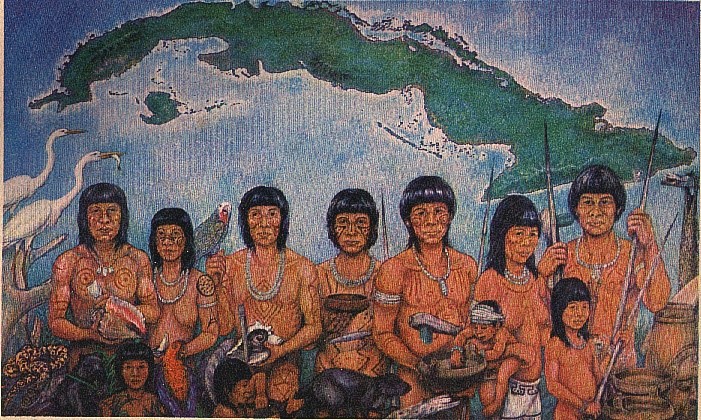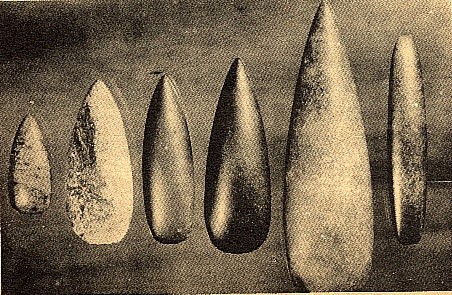GREAT: Swamp, Wetland, Watershed, Wooded Area, Ecosystem, Biosphere Reserve, Prehistoric Seat, Defeat of Yankee Imperialism, Municipality How many nouns with a common adjective! And all to designate how immense is the Cienaga de Zapata.
As the daughter of imagination, neglect, abandonment and isolation before 1959, a distorted image of her was created: chilling murders, swamps or scrapie determined to extinguish the human species, snake eaters and crocodiles and implacable vampires, turned the Swamp into Zapata in the dark Africa of Cuba.
Despite this, nature has remained beautiful and lavish for millennia to support her children, constituting our most precious treasure. We cannot forget that she conceived, breastfed and still pampers history! All the transcendental events or social processes developed here have had the absolute complicity of forests, coastline, steeple1, swamp and grassland, which as silent witnesses jealously guard great secrets !
La Ciénaga before and after taking his surname - ceded by Mr. Francisco Zapata since 1636 when he applied for the land grant, which with the name of Rancho de Juan Caballero, is located on the north bank of the beautiful Hatiguanico river - constituted a safe haven, not only for animals but also for man, who for various reasons sought their protection: aborigines, pirates, corsairs, buccaneers, maroons, mambises, bandits, fugitives and Hispanics.
PREHISTORY
Men belonging to the Gatherer - hunter and fisherwoman and agricultural potter cultures made up the prehistory of these humid places, settling on a karst axis from Venero Prieto to Bartolina.

Map: Aboriginal habitation sites.
From the archaeological studies carried out, we can affirm that the largest population corresponded to the man-gatherer-hunter and fisherman (pre-agri-potter), who had as their routes of origin the north of the South American continent through the Antillean arch on dates ranging between 2000 and 1000 ANE
These beings had the typical characteristics of the Indo-American mixed race. They were among the shortest towns in the Antilles area with 158.66 cm for the male and 144.92 cm for the female.
They were carriers of a stone industry in volume of Banwaroide tradition (greater antiquity in the Banwari Trace site, on the island of Trinidad), who when coming into contact with other communities settled in the Cuban territory previously, assimilated the Manicuaroid tradition (extensive use of the shell).
So the shell industry is the distinguishing feature of the prehistoric men from Cenagal. Using percussion, fracture and abrasion techniques, plus empirical knowledge, these artisans made more than thirty tools, which we can group into: vessels, plates, spoons, gouges, picks, hammers, scrapers, knives, axes, spear tips and harpoons.
Of all of them, the Gubia stands out as a diagnostic element - an artifact made from the base of the snail with part of the last round - presenting a bevel, which gives its name.
They also built various lithic instruments in order to be used in various activities of daily life; these present bilateral symmetry, standing out hammers, pestles, mortars and grinding stones.
Although La Gubia is a symbol within this man's conch industry; Las Esferolitias3 and Los Gladiolitos4 - for ceremonial purposes - define it: “they are almost always associated with burials”; constructed of milky quartz, streamers, agate, and coral rocks; They differ in size and shape (from a simple size to perfectly polished with extraordinary symmetry) .The Gladiolites are elongated, end in a pointed shape and in most cases, one of its ends has a bifurcation or several concentric rings have been carved, which make them very pleasing to the eye.
 Characteristics and industries of Cuban prehistoric man
Characteristics and industries of Cuban prehistoric man
They built habitation sites near the coast, lagoons, rivers and veneros in correspondence with their economic pattern: Collection - Hunting - Fishing.
Although the famous historian “Cosculluela” revealed through his fascinating descriptions, vestiges of the Arawaca family; Until very recently, the Cienaga was considered the only seat of the pre-agri-pottery aboriginal. But since Mrs. Brunilda Pérez (neighbor of the town of Cocodrilo) found and donated to the Girón Museum, two beautiful petaloid axes on November 15, 1987 and the Census and Archaeological Exploration Expedition carried out by the student Adrián Álvarez Chávez with a team Working on September 10, 1996, he collected two more petaloid axes, from the hand of Mrs. Toala Borges Benitez, radically changed that opinion, in the face of so much Neolithic material evidence! This confirmed the migration theory of agricultural potters in the region, which establishes the origin of the Bay of Cienfuegos (Jagua), crossing the swamp heading northwest to Canimar (Matanzas) and Havana.
The Subtaínos (early agricultural potters) were strong men, of medium stature and of good presence. They arrived in Cuba in the year 500 N. E. Coming from the Venezuelan coasts in successive waves. They were carriers of agricultural techniques of a certain level of development with an ancient pottery tradition. It can be seen that his trousseau was very abundant and varied, evidenced by the large number of ceramic, stone, shell, bone, wood, basketry and textile objects. For this reason we will only address the most distinctive elements:
Ceramic is generally smooth and not decorated; in the decoration cases they do not include the paint, so we can affirm that it is monochrome, oscillating between the colors dark brown (almost black) and light brown, sometimes reddish, all depending on the cooking system and the material used by the indigenous artisan. Usual decorating techniques include the use of incision, application, fixation, and modeling.
Other very frequent artifacts in the ceramic trousseau of these aborigines are the burenes (clay discs with a diameter ranging from 30 to 60 cm and a thickness ranging from 1.5 to 4 cm), where the mass of the grated bitter cassava was deposited , to cook the casabe, base of the Arawaca diet.
Petaloid Axes distinguish Neolithic man for his great workmanship and aesthetic value. Constructed of very hard stone, they give a measure of how skillful this craftsman was with respect to his collector - hunter and fisherman counterpart (pre-agri-potter).
 Petaloid Axes
Petaloid Axes
The Subtainos, although they were sustained through a gentilicio economic nucleus, already show some symptoms that indicate a phase change towards the patriarchal stage: El Cacique.
Agro-potter man, with a higher degree of development, where the basis of his economic livelihood lay with agriculture (producing economy), should not have remained for long in an environment like ours - hardly feasible to develop this activity - since restricted are the areas in the swamp where your soil can provide agricultural sustenance for an extended period of time. Only the strip of red ferralitic soil from Plasencia - Soplillar - Molina - San Blas presents favorable characteristics.
So it was not by chance that the subtaino settled in “El Soplillar”, a portion of the “Santa Teresa” farm.
The important archaeological find of 1999, was the first great fruit of the opportune idea to found a caving-based speleoarchaeological group - that would exercise the "science of the ancient" from the heart of the wetland - called "GUAMO", it is made up of laborious organ specialists CITMA and other scholars who have found it appropriate to be led by the Municipal Historian.
Due to the importance of the aforementioned finding (“Socorro” or “Guamo I”), we transcribe the notes taken by the Matanzas Scientist Ercilio Vento Canosa - President of the Speleological Society of Cuba - and how much it had to do with our professional work:
"An important Neolithic archaeological site was found in the town of Soplillar in the Cienaga de Zapata, by members of the Office of the Historian and the Organ CITMA in the territory of Ciudad Real.
The archaeological site called “Guamo I”, is characterized by 192 blackish-brown ceramic fragments, with a fine mordant and notable thinness and hardness, and other thicker brownish-red and thicker mordant, with different levels of firing in its elaboration.
The place, despite being altered due to being a cultivation area and using a plow, seems to contain a greater volume of evidence, including bone, that could mean an important Neolithic settlement point in the area.
The pottery found establishes similarity with that found in Jagüa, Cienfuegos and Canimar, Matanzas; This makes it possible to strengthen the hypothesis of a migration route from Jagua to Matanzas crossing through the footing, as well as towards the southern coast of Havana¨.
March 1999 Ercilio Vento Canosa.
By way of conclusion, we can mean that until today (2001), the areas of greatest prehistoric settlement in the Cienaga de Zapata are located:
Venero Prieto ................................................ .... 2
Santa Teresa (Soplillar) ..................................... 7
Jiquí (Chad - Hondones) ................................. 5
Punta Perdiz - Girón .......................................... 5
Caleta Buena ................................................ ...... 10
Caleta del Toro ............................................... .... 2
Costanera Norte ................................................ . 2
Due to the geographical location, it is inferred that the aboriginal groups and cultures settled preferentially in the eastern part of the territory of cienaguero, on a karst axis with abundant groundwater located between the coast and the southern coast, in correspondence with their degree of development and type of economy: those of appropriation economy (mesolithic) settled relatively close to the coast and on the margins of lagoons, rivers and veneros, which provided them with a good part of their diet; those with a productive economy (Neolithic), settled in the most fertile places on earth - excepting those who did it trying to protect themselves from the excessive ambition of the white man, who pushed them to well hidden places where they could survive in small numbers, that although they preserved their own traditions, customs and characteristics (some absorbed by the Cuban cultural amalgam), they could no longer clearly and homogeneously exhibit their distinctive features - in this case, the subtaino had to sustain himself from hunting - fishing and gathering, since in the abnormal circumstances in which he was involved (where life meant concealment), he did not allow himself to be accommodated according to his customary economic model.
This hypothesis comes to answer him somewhat why we can find Subtaí settlements in places that are not feasible for agriculture - as is the case of Cocodrilo - relatively close to the "Cacicazgo de Jagüa".
But despite their misfortunes and technological backwardness, they had the great fortune to admire an almost impenetrable swamp for its huge trees, where captivating plants and fauna, harmonized to dazzle with its color. Every time, they abounded: the Cahuey (macaw), Catey (parakeet), Camá (partridge dove), Guaní (zunzuncito), Guatini (tocoloro), Cartacuba (pedorrera), Bijirita (chillina), Camao (blue dove), Caica , Paraca or Higuaca (parrot), Guacaica (muleteer), Mayo (swamp mayito) and many other species of animals.
In the twilight of the prehistory of Cienaguera - not due to social evolution, but as a consequence of the barbarism of the conqueror - the patriotic tradition of the current inhabitant was born: “Legend has it that primitive man from Ciennaga starred in the largest natural reservoir in the basin ( Laguna del Tesoro), the first act of patriotism and rebellion against the Spanish conqueror, when aborigines of the chiefdoms of Yaguaramas and Hanábana, preferred to throw their valuable gold nuggets and sacred Cemies into the deep waters of the lagoon, before delivering them to the ambitious "pale face".




- You should not use obscene or offensive words.
- Comments should be related to the topic.
- Comments that violate previous policies will not be posted.